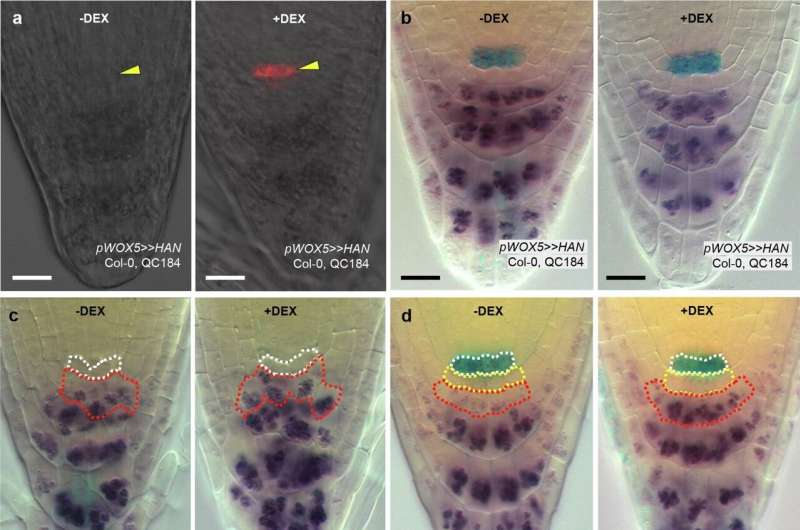Researchers from the University of Freiburg have made a groundbreaking discovery in understanding the biological mechanism of plant growth control. By identifying the HAN molecule as a key regulator that works in conjunction with WOX5, they have shed light on how plants form new leaves, flowers, and roots. This knowledge could be pivotal in developing more resilient and higher-yielding crops, as plant stem cells play a crucial role in this process.

Unveiling the Secrets of Plant Stem Cell Regulation
Plants have a remarkable ability to continuously grow and adapt, thanks to the presence of stem cells in their meristems – the regions where new leaves, flowers, and roots are formed. These stem cells are the key to plants’ resilience, as they divide and differentiate into specialized cells as needed. However, the process of controlling stem cell growth and development is complex and has long been a subject of fascination for scientists.
Now, a team of researchers at the University of Freiburg has made a groundbreaking discovery that sheds light on this intricate mechanism. By studying the example of plant roots, they have identified the HAN molecule as a crucial regulator that works in tandem with the signaling molecule WOX5 to ensure stem cells in the meristem remain undifferentiated and continue dividing. This delicate balance is essential for maintaining controlled growth, as uncontrolled stem cell division could lead to the plant equivalent of cancer.
The Intricate Dance of HAN, WOX5, and CDF4: Orchestrating Plant Growth
The researchers’ findings reveal a fascinating interplay between the key players in this regulatory mechanism. WOX5 is a well-known signaling molecule that helps maintain the stem cell niche in plant meristems, but the exact mechanism by which it does this was previously unknown.
The team led by Professor Thomas Laux has now identified HAN as the critical factor that transmits the WOX5 signal and ensures the CDF4 gene remains inactive in stem cells. CDF4 would otherwise cause the stem cells to differentiate, losing their unique properties. By suppressing CDF4, HAN allows the stem cells to stay undifferentiated and continue dividing, enabling the plant to grow and develop new tissues.
Interestingly, the researchers suggest that this multi-layered regulatory process may actually provide plants with an advantage in dealing with environmental fluctuations. The involvement of HAN as an intermediary between WOX5 and CDF4 appears to make the stem cell regulation less sensitive to external influences, potentially enhancing the plant’s resilience.
This discovery opens up new avenues for understanding how plants can thrive even under suboptimal conditions, such as extreme weather events or poor soil quality. By unraveling the intricate mechanisms behind plant stem cell regulation, scientists can now work towards developing more robust and high-yielding crop varieties that can better withstand the challenges of a changing climate.
Implications for Sustainable Agriculture: Breeding Resilient Crops
The findings from the University of Freiburg team have far-reaching implications for the future of sustainable agriculture. Understanding the biological processes that govern plant growth and development is a crucial step in breeding more resilient and productive crop varieties.
By targeting the key regulators identified in this study, such as HAN and WOX5, plant breeders can potentially engineer crops that are better equipped to withstand environmental stresses, pests, and disease. This could lead to higher yields and more reliable food production, especially in regions where climate change and other challenges pose a significant threat to traditional agricultural practices.
Moreover, this research highlights the importance of fundamental science in addressing real-world problems. By delving into the intricate mechanisms of plant biology, researchers have uncovered insights that can have a tangible impact on the future of food security and sustainable agriculture. As the global population continues to grow and the need for climate-resilient crops becomes more pressing, this type of groundbreaking work will be essential in shaping the next generation of agricultural innovations.
